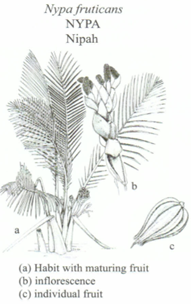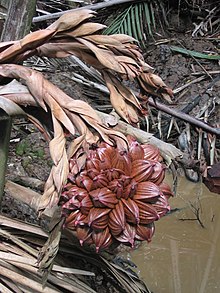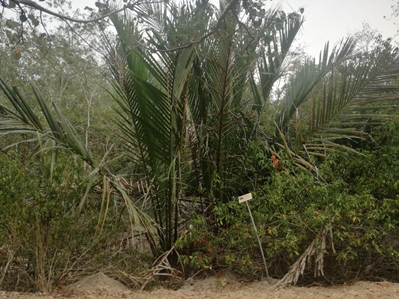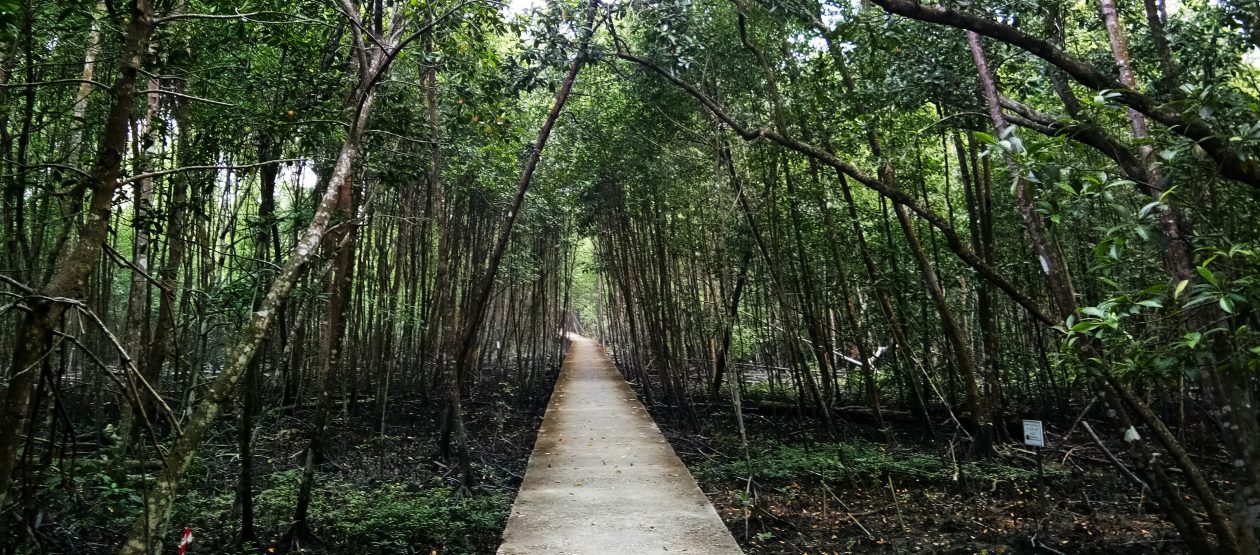CLICK BELOW FOR AUDIO GUIDE
Nypa fruticans, commonly known as the nipa palm (or simply nipa) or mangrove palm, is a species of palm native to the coastlines and estuarine habitats of the Indian and Pacific Oceans. The nipa palm’s trunk grows beneath the ground and only the leaves and flower stalk grow upwards above the surface. Thus, it is an unusual palm tree, and the leaves can extend up to 9 m (30 ft) in height. The flowers are a globular inflorescence of female flowers at the tip with catkin-like red or yellow male flowers on the lower branches. The flower produces woody nuts arranged in a globular cluster up to 25 cm (10 in) across on a single stalk. The ripe nuts separate from the ball and are floated away on the tide, occasionally germinating while still water-borne.

The long, feathery leaves of the nipa palm are used by local populations as roof material for thatched houses or dwellings. The leaves are also used in many types of basketry and thatching. Large stems are used to train swimmers in Burma as it has buoyancy.
In the Philippines and Malaysia, the flower cluster (inflorescence) can be “tapped” to yield a sweet, edible sap collected to produce a local alcoholic beverage called tuba, bahal, or tuak. A fruit cluster is ready to be tapped when the unripe fruits are at their peak sweetness. The cluster is cut from the stalk about six inches down and mud is rubbed on the stalk to induce sap flow, sap begins flowing immediately if the fruit maturity was correctly gauged.

The nipa palm produces a very high yield of sugar-rich sap. Fermented into ethanol or butanol, the sap may allow the production of 6,480–20,000 liters per hectare per year of fuel. By contrast sugarcane yields roughly 5200 liters of ethanol per hectare per year and an equivalent area planted in corn (maize) would produce only roughly 4000 liters per hectare per year, before accounting for the energy costs of the cultivation and alcohol extraction. Unlike corn and sugarcane, nipa palm sap requires little if any fossil fuel energy to produce from an established grove, does not require arable land, and can make use of brackish water instead of freshwater resources. Also unlike most energy crops the nipa palm does not detract from food production to make fuel. In fact since nipa fruit is an inevitable byproduct of sap production as a crop it produces both food and fuel simultaneously.

